August 10, 2018 - Hose on the Ferguson Fire: where it is used and what happens to it when the flames have been doused.
1,376,400 feet of hose have been used on the Ferguson Fire. All of that hose is “backhauled,” or returned to fire camp, to be straightened; wound into 100 or 50 ft rolls; transported to a central regional warehouse known as a cache; washed and re-rolled to be ready for transportation to the next fire. The hose is cleaned to prolong its life and ensure its proper performance. Without proper cleaning it can pick up harmful chemicals and can grow mold and mildew. Cleaning can also prevent the spread of noxious weeds from one location to another.
Each pallet of recycled hose contains two miles of hose. The most common hose sizes are one inch, one and a half inch and garden-size hose which is used primarily for mopping up during the final stages of the fire. Hose is just one tool in a firefighter’s toolkit, but an important one.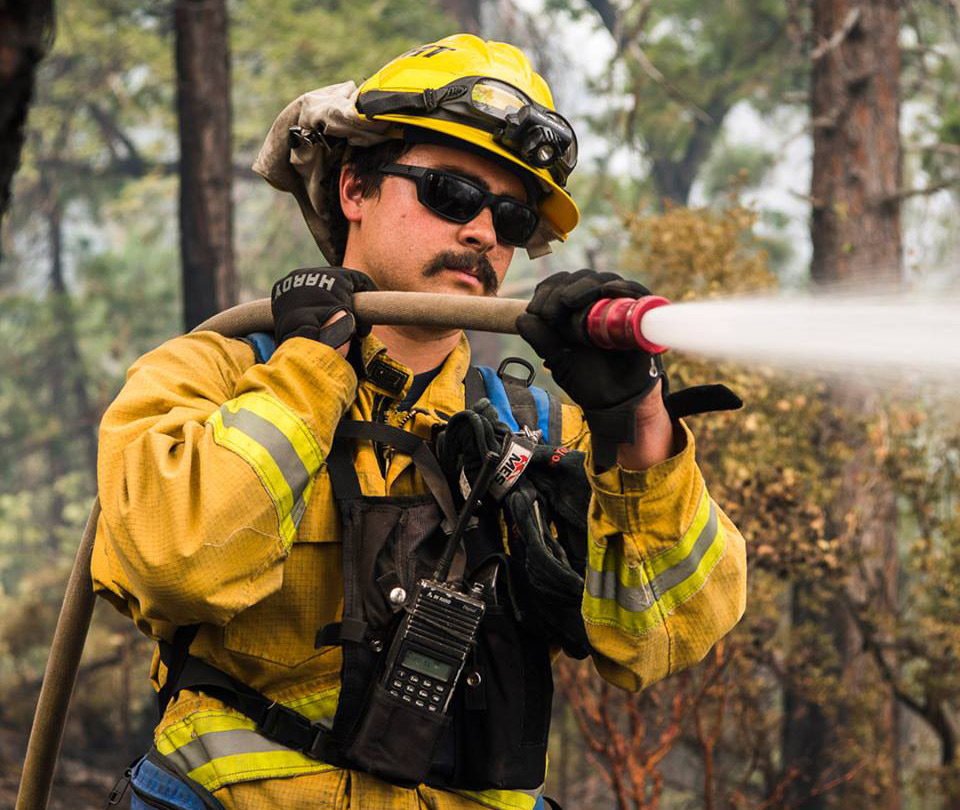 With over a million feet of hose used on a major fire like the Ferguson laying in a heap, it might be tempting to take it for granted, but firefighters never will.
With over a million feet of hose used on a major fire like the Ferguson laying in a heap, it might be tempting to take it for granted, but firefighters never will. Rolls of 1 inch and 1 1/2-inch hose arrive on the fire line on fire trucks.
Rolls of 1 inch and 1 1/2-inch hose arrive on the fire line on fire trucks.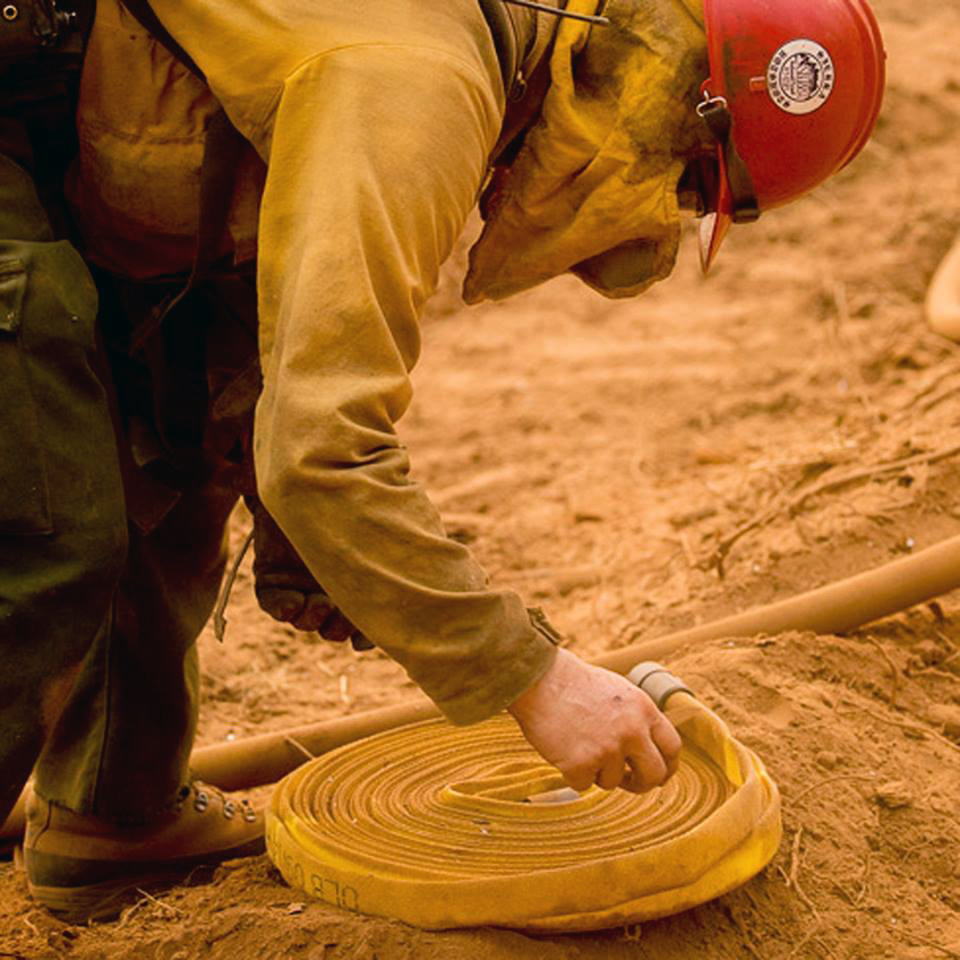 Firefighters connect hose rolls together and attach valves and nozzles. They are attached to pumps at water sources, which could be a water tender, portable water container, a stream, river, or lake.
Firefighters connect hose rolls together and attach valves and nozzles. They are attached to pumps at water sources, which could be a water tender, portable water container, a stream, river, or lake. Heavy hose lines are dragged down roads, dozer lines, hand lines and up steep hillsides to put water where it is needed to fight the fire.
Heavy hose lines are dragged down roads, dozer lines, hand lines and up steep hillsides to put water where it is needed to fight the fire.  The size of the hose and the type of nozzle create the proper strength and spray for the task at hand.
The size of the hose and the type of nozzle create the proper strength and spray for the task at hand.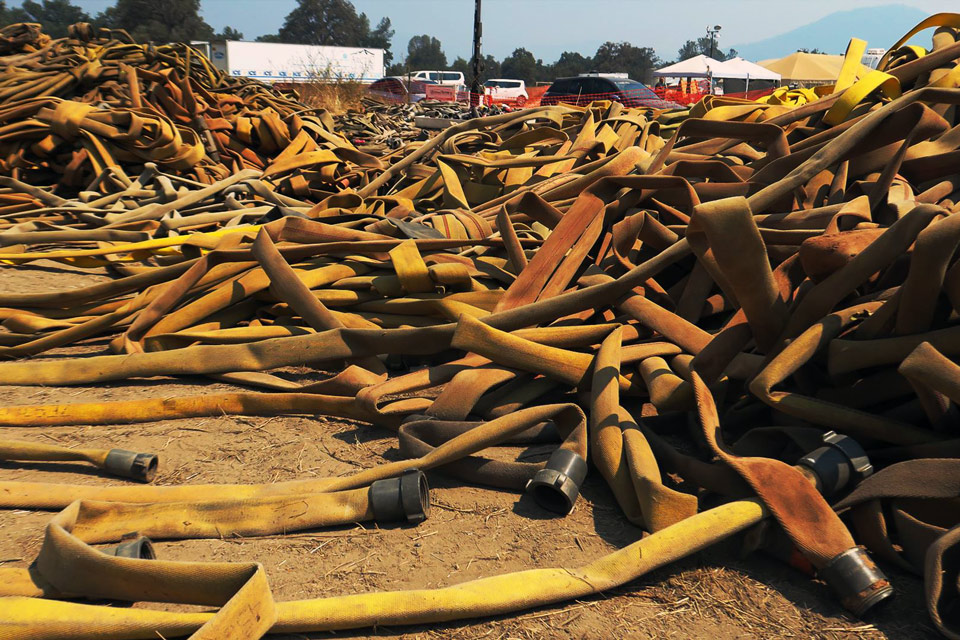 When hose is "backhauled," or brought back to fire camp, it is stacked in piles.
When hose is "backhauled," or brought back to fire camp, it is stacked in piles.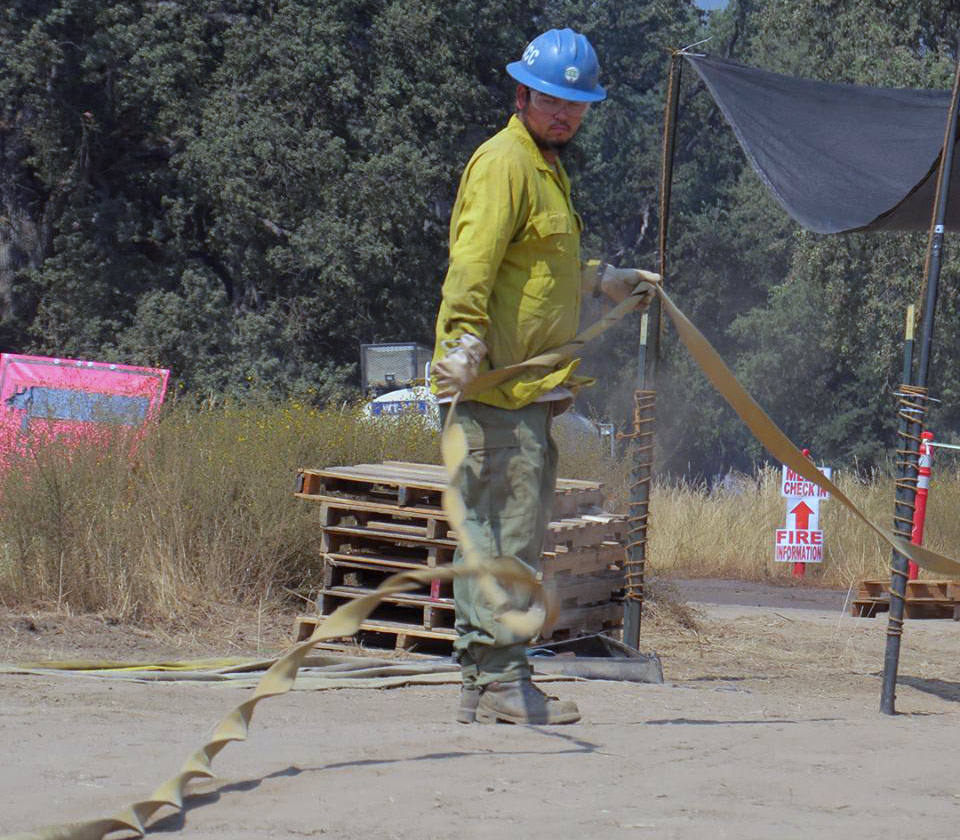 The hose is straightened and flattened, removing twists and making it ready to be wound back into rolls.
The hose is straightened and flattened, removing twists and making it ready to be wound back into rolls. The hose is laid out in long strips and fed into hose-winding machines.
The hose is laid out in long strips and fed into hose-winding machines.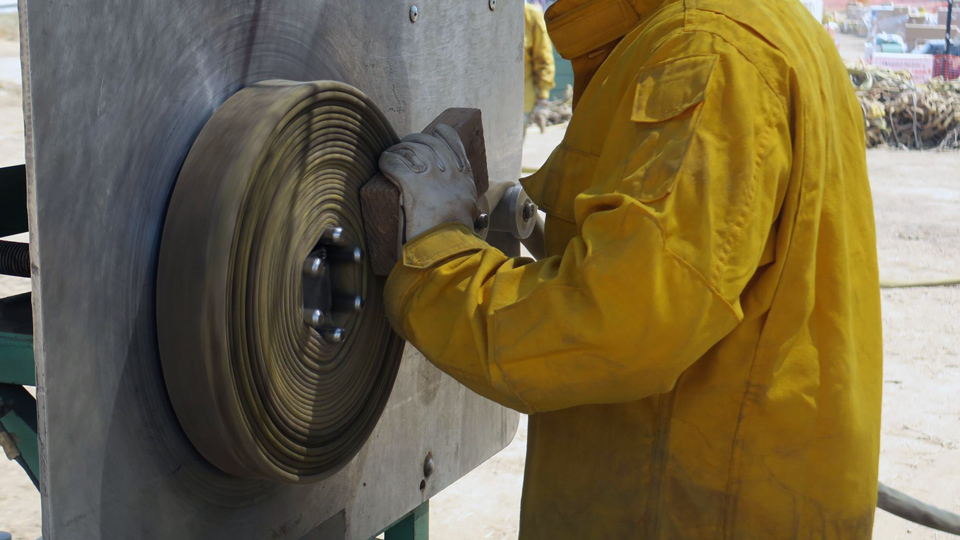 The winding machine operator presses a pice of wooden plank against the hose roll as it winds to keep it flat.
The winding machine operator presses a pice of wooden plank against the hose roll as it winds to keep it flat.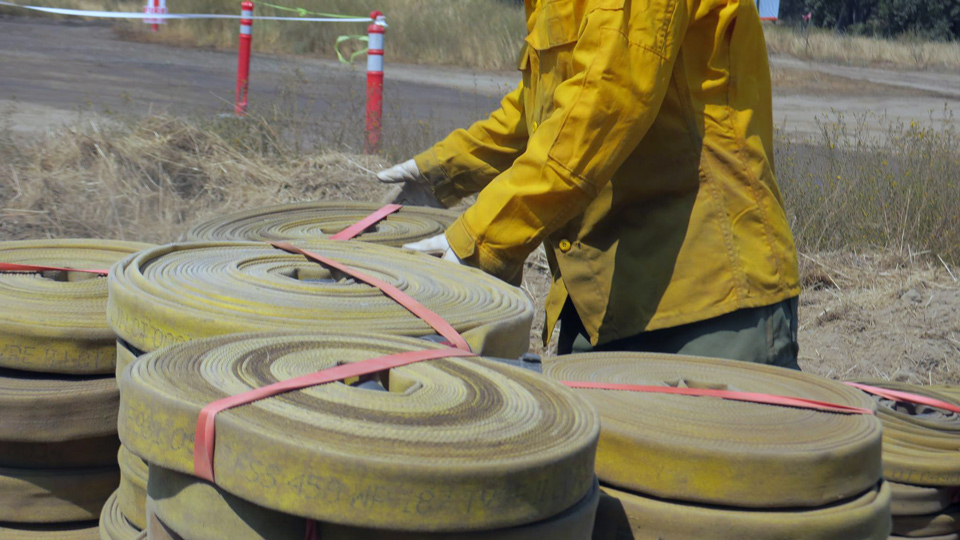 Finished rolls are secured with red rubber bands. The red bands mark the rolls as used and headed for the cache for any needed repairs and washing.
Finished rolls are secured with red rubber bands. The red bands mark the rolls as used and headed for the cache for any needed repairs and washing. 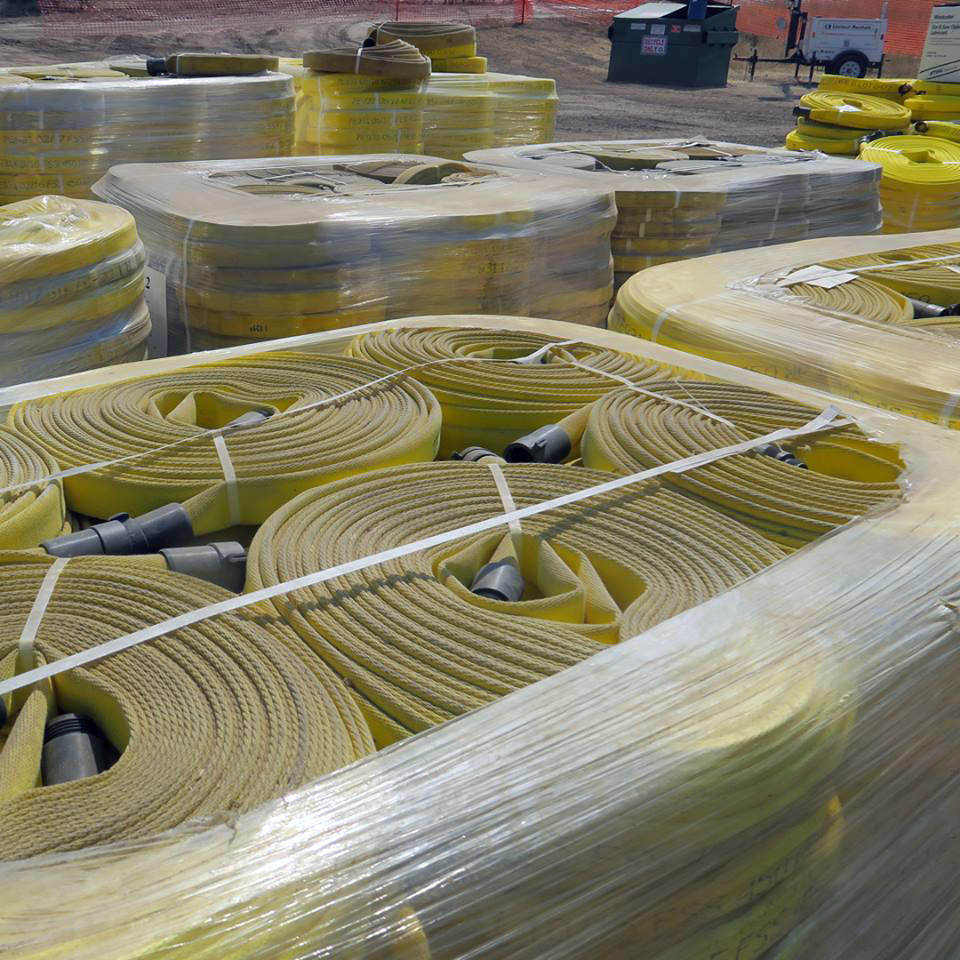 When the 100-foot hose rolls have been washed they are secured with a white band, loaded on pallets, wrapped and sent out to another fire. Each pallet contains 10,000 feet of hose, or about 2 miles.
When the 100-foot hose rolls have been washed they are secured with a white band, loaded on pallets, wrapped and sent out to another fire. Each pallet contains 10,000 feet of hose, or about 2 miles.
Source & photo credit: U.S. Forest Service - Sierra National Forest








